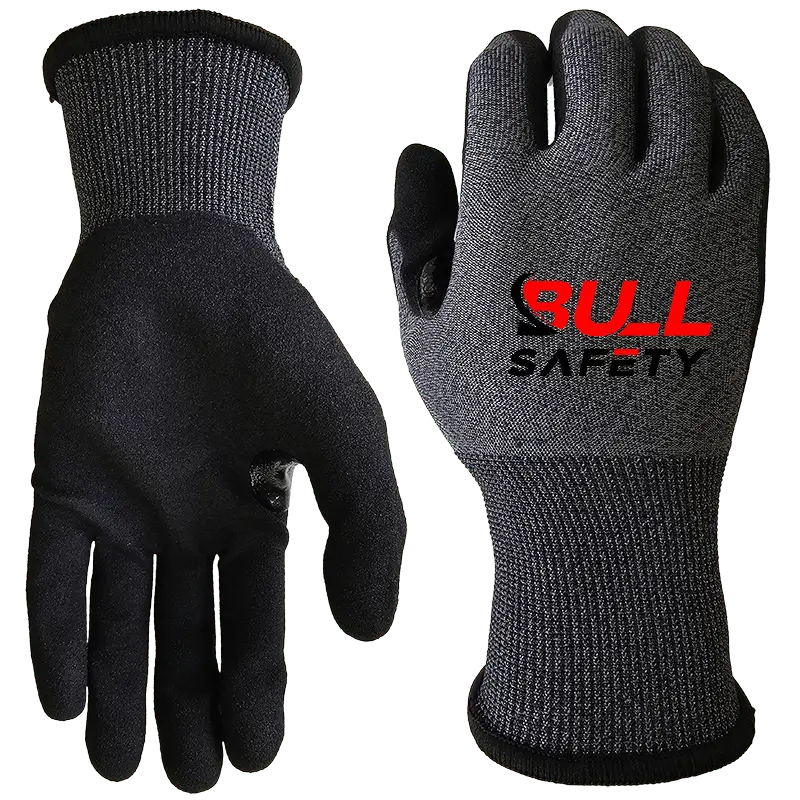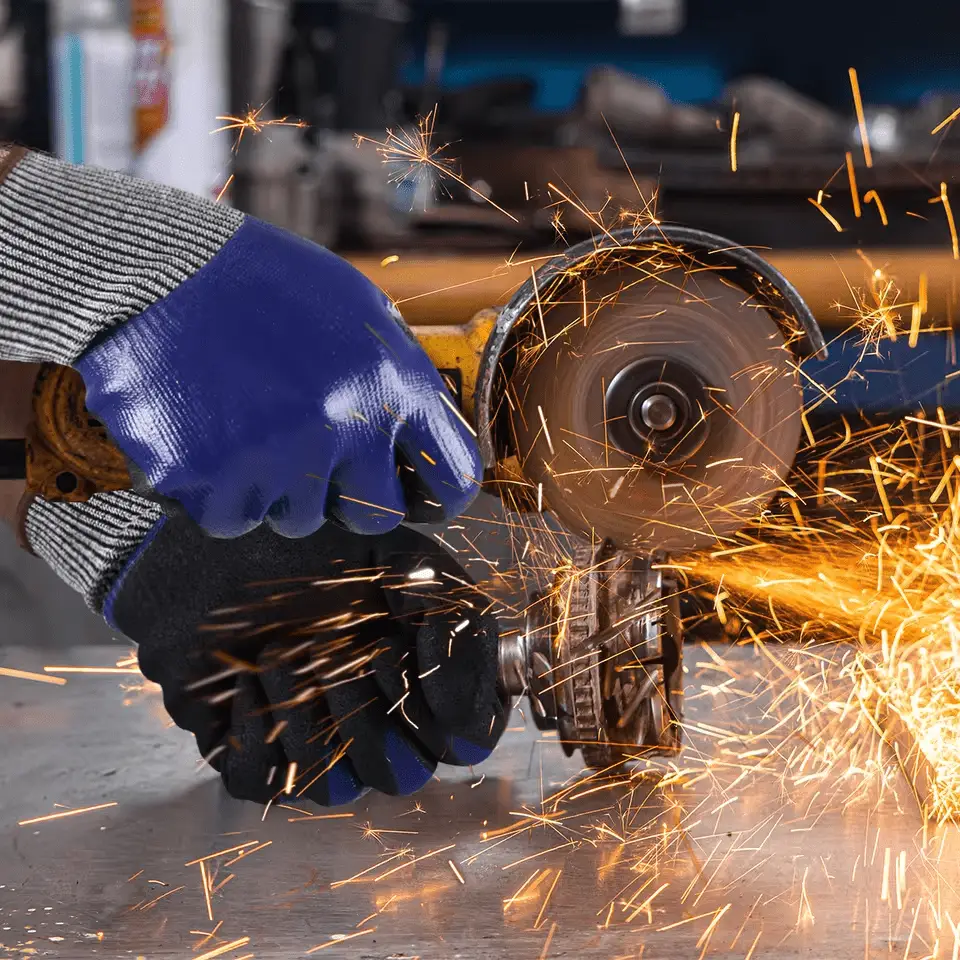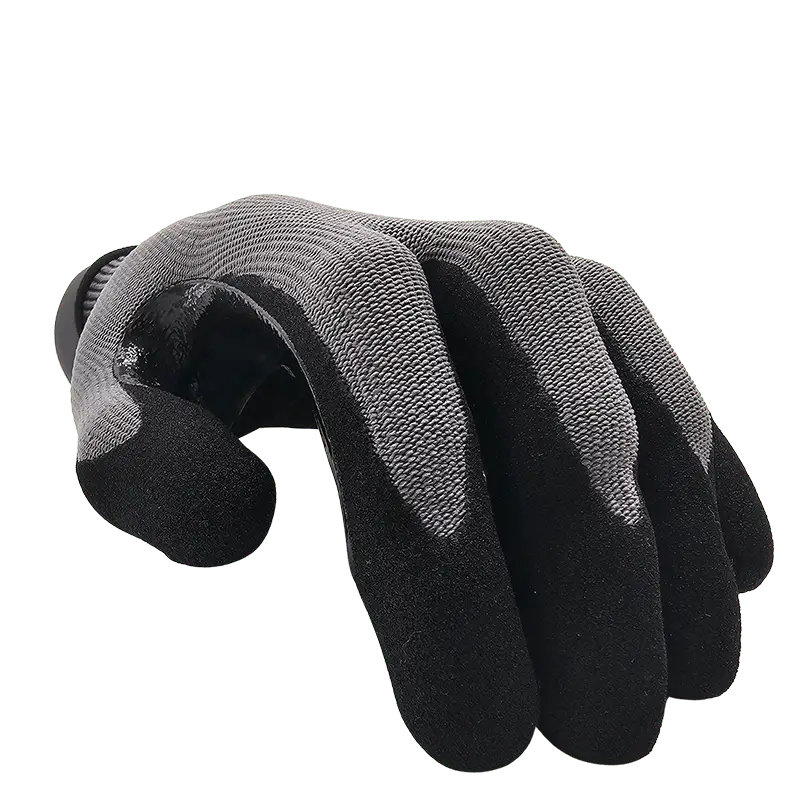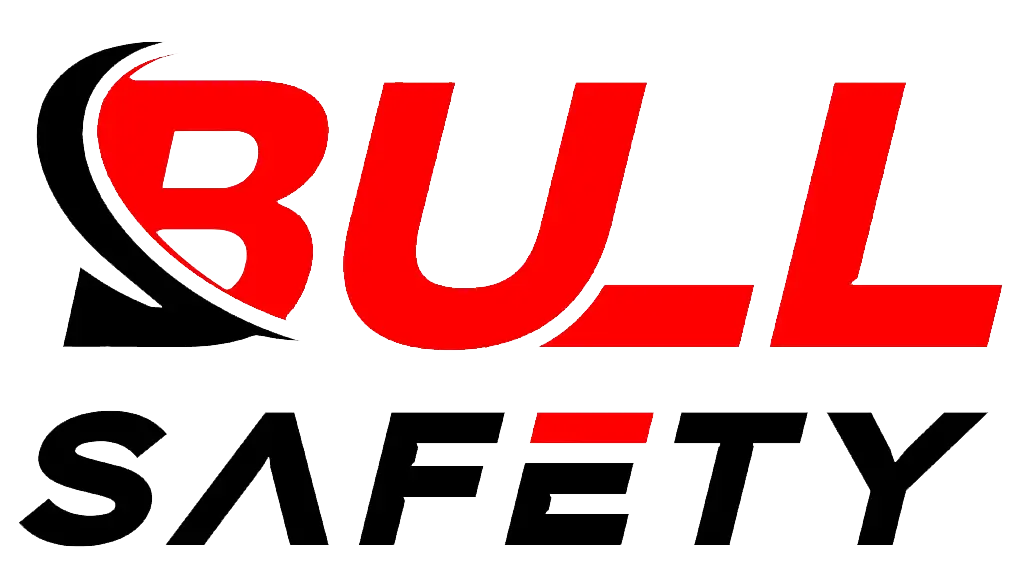
As I have been deeply involved in the PPE industry, I know that workers handling sharp objects and oily materials need gloves that offer both cut resistance and a strong grip1. But can one glove provide both effectively?
Sandy nitrile cut-resistant gloves2 combine a high-cut-resistant liner with a textured sandy nitrile coating to provide superior grip, durability, and protection in hazardous environments. I’ve seen firsthand how these gloves outperform other coated gloves in real-world industrial settings.
These gloves are widely used in industries like metalworking, automotive, construction, and glass handling3. But what makes them different? Let’s break it down.
What are sandy nitrile cut-resistant gloves?
Cut-resistant gloves come in different coatings, but why is sandy nitrile a top choice for tough jobs?
Sandy nitrile cut-resistant gloves are built with a high-strength fiber liner (like HPPE or Kevlar) and a textured nitrile coating that enhances grip, cut protection, and abrasion resistance. Unlike PU or latex-coated gloves, sandy nitrile excels in environments where grip and durability are equally critical.

21g A4 sandy nitrile palm coated graphene gloves – Bullsafety
Key features of sandy nitrile cut-resistant gloves
| Feature | Benefit |
|---|---|
| Sandy Nitrile Coating | Provides excellent grip in dry, wet, and oily conditions. |
| Cut-Resistant Liner | Made from HPPE, Kevlar, or steel fiber blend for enhanced protection. |
| Abrasion & Tear Resistance | Designed for heavy-duty industrial work. |
| Dexterity & Comfort | Flexible for precise handling of small and large objects. |
The sandy nitrile texture is unique because it creates a rough surface that increases friction, allowing for a superior grip on slippery tools and materials.
How do these gloves work?
The combination of a cut-resistant liner4 and a sandy nitrile coating5 provides dual protection:
- The liner absorbs the force of sharp objects, preventing cuts.
- The coating enhances grip and durability, reducing wear and tear.
I often recommend these gloves to clients in industries that require both safety and longevity for high-risk jobs.
What are sandy nitrile cut-resistant gloves used for?
These gloves do more than just protect against cuts—where do they provide the most value?
Sandy nitrile cut-resistant gloves are used in metal fabrication, automotive, oil & gas, construction, and glass handling for protection against sharp edges and slippery materials.

Industries that benefit from these gloves
| Industry | How They Provide Protection |
|---|---|
| Metalworking | Prevents cuts from sharp metal edges, stamping machines, and tools. |
| Automotive | Enhances grip on oily car parts and metal components. |
| Construction | Protects against nails, wires, and abrasive materials. |
| Glass Handling | Reduces risk of hand injuries from broken glass. |
| Oil & Gas | Ensures a secure grip on oily tools and machinery. |
Common applications
- Sheet Metal Handling – Protects hands from sharp edges and metal burrs.
- Machinery Assembly – Improves grip and dexterity for precision work.
- Warehouse Work – Prevents cuts and abrasions when handling heavy loads.
- Glass Installation – Reduces slipping and breakage risks.
What is the standard for sandy nitrile cut-resistant gloves6?
Sandy nitrile cut-resistant gloves are tested under EN 3887 (Europe) and ANSI/ISEA 1058 (North America) to ensure they meet workplace safety requirements.
I often advise my customers to choose gloves with cut levels A4-F or A5+, depending on their specific workplace hazards.

Conclusion
From my experience in PPE manufacturing and sales, sandy nitrile cut-resistant gloves offer superior grip, cut protection, and abrasion resistance, making them essential for high-risk industries like metalworking, automotive, and construction. If you’re looking for reliable, durable hand protection, these gloves are a top choice.
-
Explore this link to understand how gloves can offer both cut resistance and grip, ensuring safety in hazardous environments. ↩
-
Discover the unique features of Sandy nitrile cut-resistant gloves and how they enhance safety and performance in various industries. ↩
-
Learn about the industries that rely on cut-resistant gloves for safety and efficiency, highlighting their importance in hazardous work environments. ↩
-
Learn about the technology behind cut-resistant liners and how they protect against sharp objects, ensuring safety in high-risk environments. ↩
-
Explore how sandy nitrile coating enhances grip and durability, making gloves safer and more effective for various tasks. ↩
-
Explore this link to understand the unique features and advantages of sandy nitrile cut-resistant gloves for safety in the workplace. ↩
-
Learn about the EN 388 standard to understand how cut resistance is tested and why it matters for safety gear. ↩
-
Discover the ANSI/ISEA 105 standard to see how it ensures the effectiveness of cut-resistant gloves in various industries. ↩



